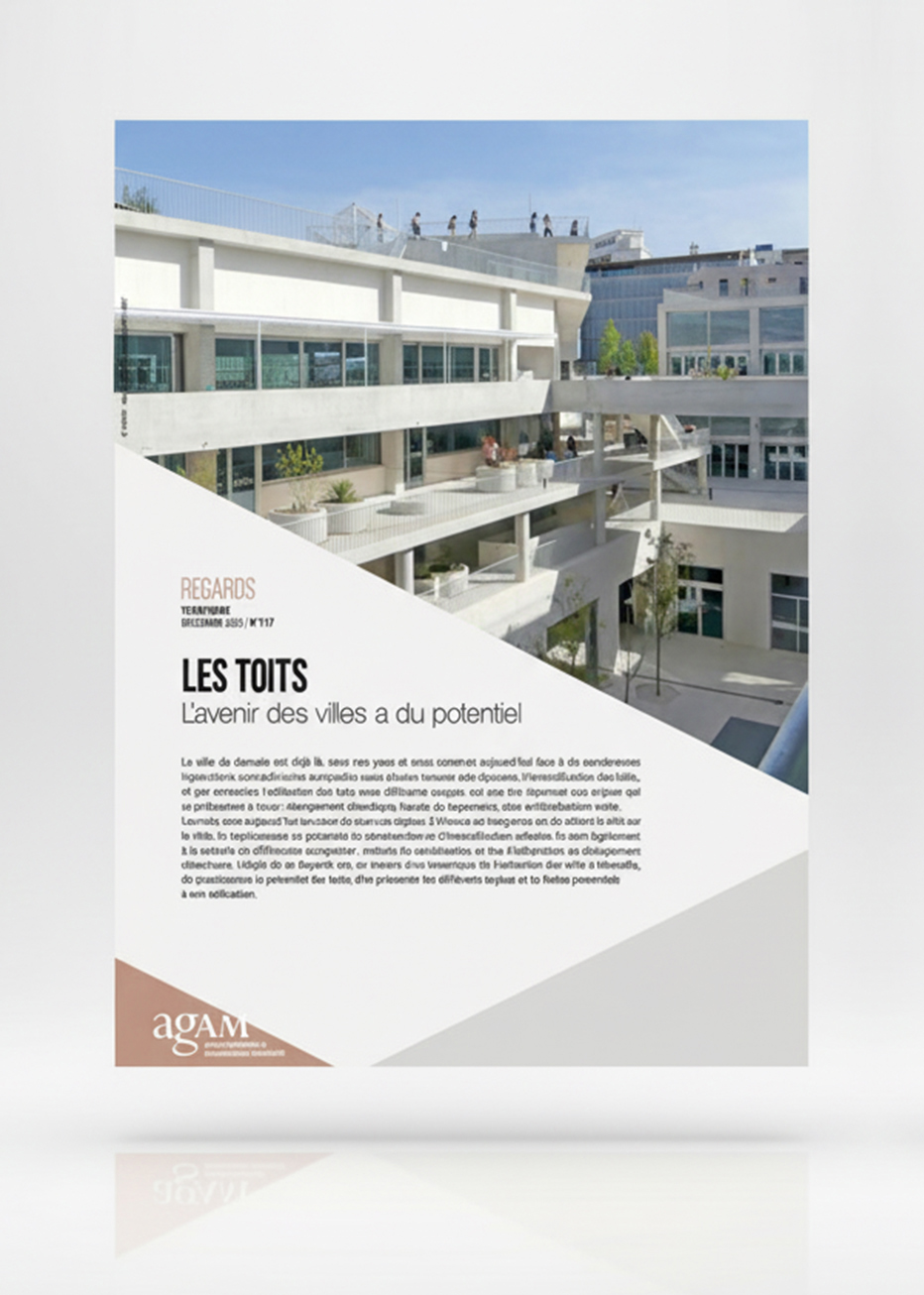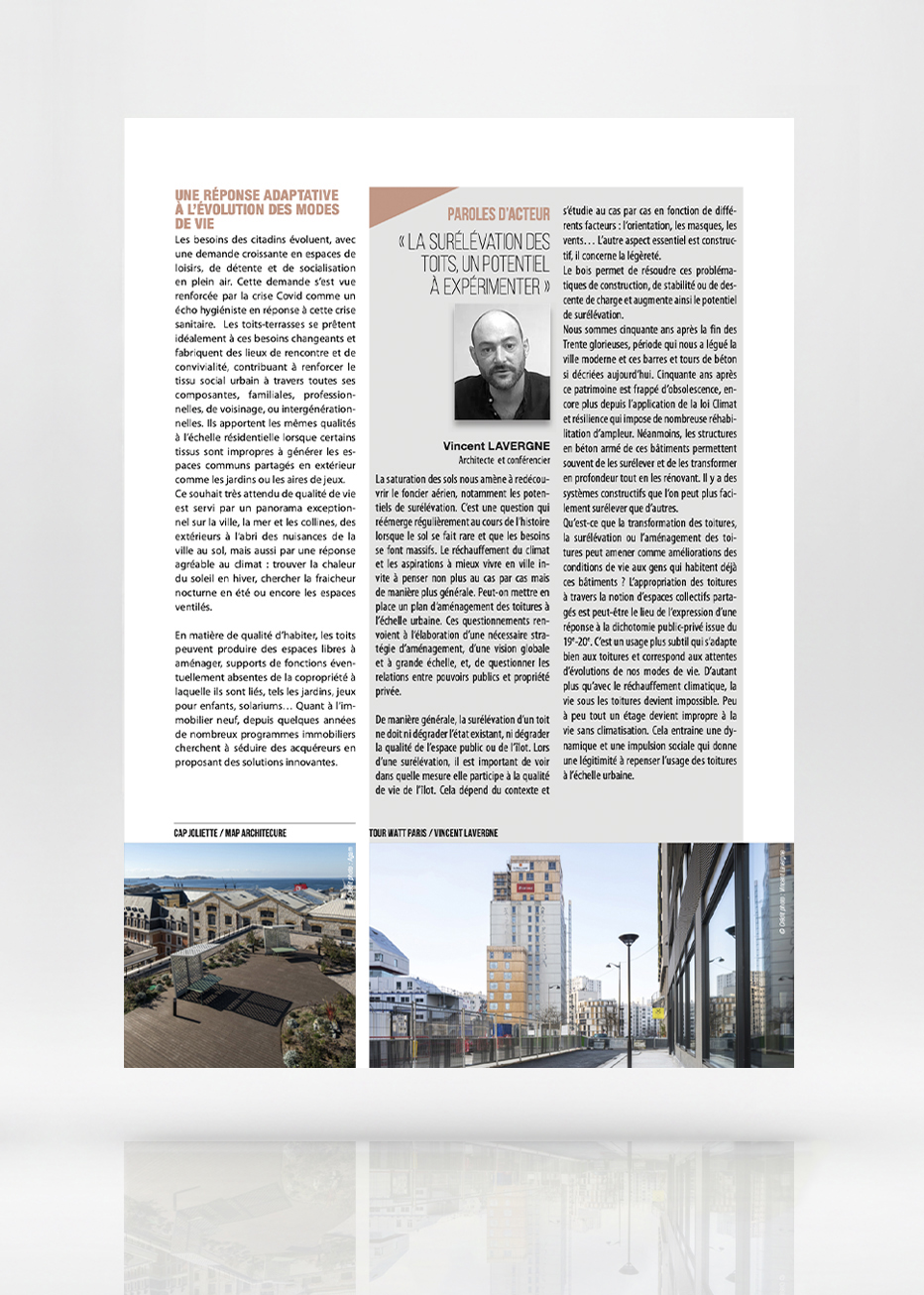

As ground space becomes increasingly saturated, we are rediscovering the concept of aerial land, particularly the potential of rooftop extensions.
This question resurfaces throughout history whenever land becomes scarce and needs grow significantly. Climate change and the growing desire to live better in cities urge us to shift from isolated case-by-case responses to broader urban strategies. Can we imagine a city-wide plan for rooftop development? These reflections call for a comprehensive planning strategy, a large-scale vision, and a re-examination of the relationship between public authorities and private property.
In general, adding height to a building must not compromise the existing structure, the quality of public space, or the character of the surrounding block. It is essential to evaluate to what extent a rooftop extension can contribute to the overall quality of life within an urban block. This depends on context and must be assessed on a case-by-case basis, considering factors such as orientation, shading, and wind patterns. Another crucial element is the method of construction — and more specifically, the need for lightweight materials.
Timber construction provides answers to these structural challenges, offering solutions for stability, load-bearing, and reducing overall weight — thus increasing the feasibility and potential of rooftop extensions.
We are now fifty years beyond the end of the Trente Glorieuses, a period that gave rise to the modern city and its much-criticized concrete towers and housing blocks. Today, these buildings are facing obsolescence — a trend accelerated by the Climate and Resilience Law, which mandates large-scale retrofitting. Yet many of these reinforced concrete structures offer real opportunities for vertical expansion and deep transformation, enabling both renovation and renewal. Some construction systems are more suitable for rooftop additions than others.
What improvements to residents’ living conditions can come from transforming or developing rooftops?
The idea of reclaiming rooftops as shared collective spaces may offer a response to the historic public-private divide inherited from the 19th and 20th centuries. This more nuanced use of rooftops aligns with evolving urban lifestyles and expectations. Moreover, with rising temperatures, top floors have become increasingly uninhabitable without air conditioning — entire levels are slowly becoming unsuitable for living. This shift creates a social momentum and legitimizes a renewed vision for the urban role of rooftops.